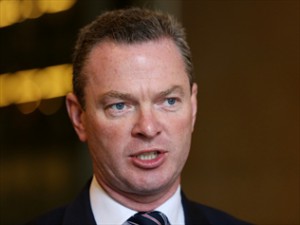 Minister for Education, Christopher Pyne, wants to move forward with strategies to support students with dyslexia. Speaking at a policy roundtable in Adelaide recently, the minister said he “would like to address this issue as a matter of urgency.”
Minister for Education, Christopher Pyne, wants to move forward with strategies to support students with dyslexia. Speaking at a policy roundtable in Adelaide recently, the minister said he “would like to address this issue as a matter of urgency.”
It is estimated that one in 10 students in Australia has dyslexia although the disorder often goes undiagnosed and untreated.
The minister said it was vital to identify evidence-based practises to make sure students with this learning difficulty had access to appropriate teaching strategies based on solid research and he has committed funding to the professional development of school principals to achieve this.
The roundtable was the first opportunity for students, parents, schools, researchers and academics to share their experiences about dyslexia with the minister.
One of the attendees, Tanya Forbes, told Freedom2Live that the push for recognition and acknowledgement of children with dyslexia in education had taken a positive step forward following the roundtable meeting. “There has been a lot of lobbying from parents and advocacy groups, particularly in Queensland and South Australia, for what we call the forgotten learning difficulty.”
Forbes, the founder of the Gold Coast Dyslexia Support Group, said parents are finding that there is not even recognition of dyslexia in many schools let alone assistance for their children. She believes the minister wants to see every school in the county become ‘dyslexic friendly,’ ultimately leading to education reform. “The minister gave a strong indication that he would like to change the way reading is currently taught in schools. He also acknowledged that ‘coping’ with dyslexia currently lies with students and their families.”
Research from Yale University in the US has shown that children with dyslexia can learn to read if they are taught the right way before they turn eight. The Australian Dyslexia Association dyslexia pilot at Robina State School has produced some interesting results and taking the ‘early’ approach has produced the best outcomes. This involved:
- Early effective literacy instruction using explicit instruction in evidence-based reading methods
- Early identification with the screening of prep children ‘red-flagged at-risk’ of reading difficulties
- Early intervention using multisensory structured language
The Australian Dyslexia Association dyslexia inclusive friendly school model is based on the National Dyslexia Working Party recommendations and the International Dyslexia Association Professional Standards for Teachers. The recommendations are:
- Officially recognising dyslexia as a disability
- Providing high quality literacy instruction
- Providing school-based dyslexia resilience programs
- Improving current teacher knowledge, skills and understanding of learning to read and dyslexia
- Improving training courses for future teachers
- Enabling access to early assessment and identification
- Providing appropriate support and accommodation
- Establishing dyslexia-friends schools
- Increasing community awareness of dyslexia
Forbes described the roundtable meeting as very hands-on and personable. “The minister was clearly interested in hearing parents’ views and what the schools were doing. It has been difficult to get schools to adopt best practice which is hopefully where the minister and government can assist us. At least we have been heard which is a major step forward.” She added that it was the minister’s view that all schools would adopt best practices, including evidence based methods, explicit instruction and dyslexia inclusive practices.
“The minister would like to ensure that state- based National Testing Authorities provide reasonable adjustments to students with dyslexia in exams, such as the provision of extra time and assistive technology. It is his vision the students with dyslexia are given every opportunity to perform to their potential.”
For more information visit: http://www.studentsfirst.gov.au/ and http://dyslexiaassociation.org.au/
